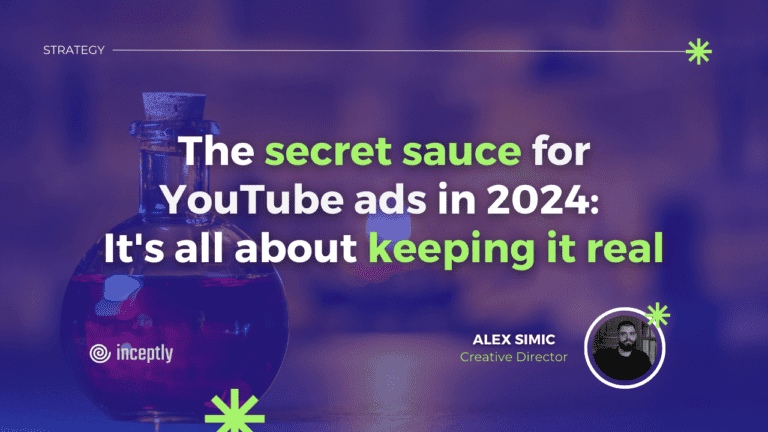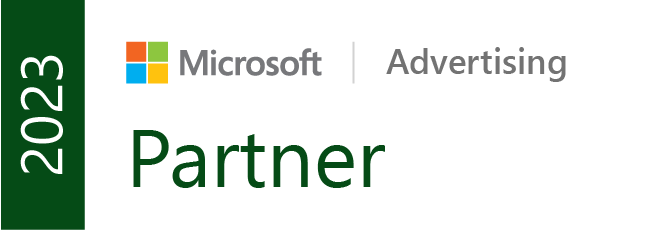
Hey guys and girls – it’s me again. Over the past few months, we’ve been diving deep into the world of YouTube ads, dissecting what’s working and what’s not. As I was preparing to write yet another analysis, I stopped for a second and said – is this what people really need right now?
Q4 is around the corner, and things are gonna get really hectic. So I thought about pressing the pause button and doing a bit of a recap.
I saw a creator on TikTok the other day saying how September 1st feels like the first day of the year to them, and honestly, same. So, let’s consider this as a bit of a wrap-up, and see what we can learn from all those successful ads on VidTao. Sometimes it’s easy to spot what’s good in a single ad, but I’m looking at what I’ve been writing about, and I’ve noticed one pattern standing out when it comes to the question of – what really moves the needle in today’s crazy world of advertising.
Want to brainstorm with our team on new ways to scale your business with YouTube Ads (and other performance video platforms)?
Join us for a free YouTube ad brainstorming session👇
After analyzing a ton of successful ads, there’s one thing that’s becoming crystal clear: In 2024, authenticity is the name of the game.
Now, I know what you’re thinking. “Authenticity? That’s not exactly groundbreaking, Alex.” But hear me out. In a world where AI is churning out content faster than we can blink, where every other ad could very well come from the same library of prompts, genuine human connection is becoming rarer – and more valuable – than ever.
It’s scary how well AI can write and ideate, but what is the thing that’s gonna be the ACTUAL key? Authenticity.
So, what does this mean for us, direct response advertisers? It means we need to step up our game. We need to cut through the noise with ads that feel real, that resonate on a human level, and that build trust with our audience.
But how the hell do we do that? Well, I’ve got four killer ways that can help you inject some serious authenticity into your YouTube ads. Let’s dive in.
1) The power of UGC talent
Meanwhile, their Meta ads are more static and focus on a clear ROI, appealing directly to the more analytical mindset of Meta users.
First up, let’s talk about user-generated content (UGC) talent. I’m not (just) talking about random people with a smartphone here. I’m talking about finding and hiring real customers who can deliver genuine, heartfelt testimonials on screen.
Here’s the thing: No amount of AI, no matter how advanced, can replicate the authenticity of a real person sharing their actual experience with your product or service. It’s raw, it’s real, and it’s incredibly powerful.
Take the time to find customers who’ve had great experiences with your brand. Work with them to craft stories that highlight not just what your product does, but how it’s impacted their lives. Maybe it’s a busy mom who finally found time for herself thanks to your time-management app. Or a struggling student who aced their exams with your online tutoring service.
The key here is to let their personality shine through. Don’t over-script it. Let them speak in their own words, with their own emotions. That authenticity will resonate with viewers in a way that no polished, corporate message ever could.
2) Behind-the-scenes: Pull back the curtain
Next up, let’s talk about pulling back the curtain on your business. People are curious by nature. They want to know the story behind the product, and the faces behind the brand.
So, why not give them a peek? Create ads that showcase the real people and processes behind your product or service. This could be a day in the life of your founder, a look at your product development process, or even a candid chat with your customer service team.
The goal here is to humanize your brand. Show the passion, the hard work, and yes, even the challenges that go into creating what you offer. This level of transparency builds trust and creates a connection with your audience that goes beyond just seller and buyer.
For example, if you’re selling a skincare line, show the chemists in the lab, explaining why they chose certain ingredients. Or if you’re offering a SaaS product, let viewers see your dev team brainstorming new features based on customer feedback.
This approach not only showcases your expertise but also demonstrates that real people – not faceless corporations or AI – are behind your product. And that’s something viewers can relate to and trust.
3) Shake up your format: Embrace innovative, authentic ad styles and formats
As we’ve already underlined – it’s not just about what you say, but how you say it. How that reflects in this context is that we’re seeing a surge in innovative ad styles that feel less like traditional commercials and more like genuine content. Let’s break down a few of these game-changing formats:
First up, we’ve got podcast-style ads. Remember that digestion ad we dissected? They nailed it with a format that felt like tuning into a valuable discussion rather than watching an ad. It’s conversational, it’s in-depth, and it allows for nuanced storytelling that can be crucial for complex products or services.
Another example is the ‘giveaway’ ads. Remember Steven Ridley’s piano ad? That was brilliant. Instead of just selling piano lessons, he created an event out of it. It’s not just an ad; it’s an opportunity for the viewer. This format turns the traditional “buy now” message on its head, offering value upfront and creating excitement with the audience, and most importantly, really feels like your average YouTube video.
4) Embrace imperfection: The power of authenticity
Last but not least, let’s talk about embracing imperfection. In a world of polished, picture-perfect ads, there’s something refreshingly authentic about content that doesn’t try to hide its flaws.
Now, I’m not saying you should put out sloppy, unprofessional ads. But there’s a sweet spot between overly polished and completely raw that can work wonders for your authenticity.
Maybe it’s leaving in a genuine moment of surprise or emotion from your presenter. Or showing the “outtakes” alongside the final product. It could even be addressing potential drawbacks of your product upfront, and explaining how you’re working to improve them.
For example, a language learning app could show real users stumbling over words or making mistakes, alongside their progress. This not only demonstrates the effectiveness of the app but also shows that it’s okay to be imperfect when learning.
The key here is to show that you’re human, that your brand is human. By acknowledging imperfections, you’re showing honesty and building trust. And trust, my friends, is the foundation of any successful business relationship.
Now, I know what some of you are thinking. “But Alex, won’t this approach make our ads less polished? Less ‘professional looking’?”
And my answer is: Good. That’s exactly the point.
In 2024, viewers are sick and tired of ads that look like they came off an assembly line. They’re craving real connections, real stories, real people. By embracing authenticity, you’re not just creating ads – you’re building relationships with your audience.
Remember, at the end of the day, people don’t buy from businesses. They buy from people they like and trust. And there’s no better way to build that trust than by showing your authentic self.
So, as you’re crafting your YouTube ads for 2024, I challenge you to take a step back from the slick, over-produced approach. Instead, think about how you can incorporate these authenticity-boosting strategies into your campaigns.
Can you feature real customer stories? Can you give viewers a behind-the-scenes look at your business? Can you engage with your audience in a new way? Can you show the human side, imperfections and all?
It might feel a bit uncomfortable at first. It might even feel a bit risky. But trust me, the payoff can be huge. Because in a world of artificial everything, real is the new remarkable.
So go out there and get real. Your audience – and your conversion rates – will thank you for it.
And hey, if you want to dive deeper into any of these strategies or need help implementing them in your campaigns, you know where to find us. We’re always pumped to help businesses crush it on YouTube with ads that not only convert but connect.
Here’s to keeping it real in 2024 and beyond. Now go out there and show the world what modern advertising really looks like!
Want to brainstorm with our team on new ways to scale your business with YouTube Ads (and other performance video platforms)?
Join us for a free YouTube ad brainstorming session👇
Want more content like this?
Don’t miss out on the latest news and updates from the world of Direct Response advertising! Subscribe to our newsletter today 👇

Alex Simic, Creative Director
Alex Simic is the person responsible for all creative work that stands behind Inceptly since stepping into his role in 2022. He comes from the role of the Media Buying Team Lead and Strategist behind some of Inceptly’s biggest successes. He has collaborated with the biggest names in the Direct Response industry, whether as a Senior Account Manager & Media Buyer or Creative Director. His main goal is bridging the gap between Media Buying and Creative, ensuring that the videos Inceptly produces are data-based and giving our clients the best chance at achieving success.
Like this post? Let's continue the conversation!
Get in touch with us by shooting us a quick email or tagging us on LinkedIn or Instagram, and sharing your thoughts. Your feedback helps us keep our blog relevant and interesting.
Get Our Newsletter
Need Help?
Get in touch with us for an insightful evaluation of your ads + actionable tips to help amp up your direct response revenue






